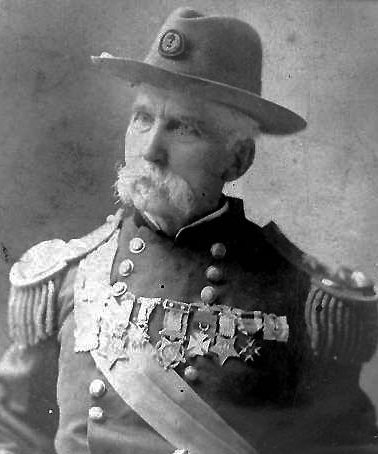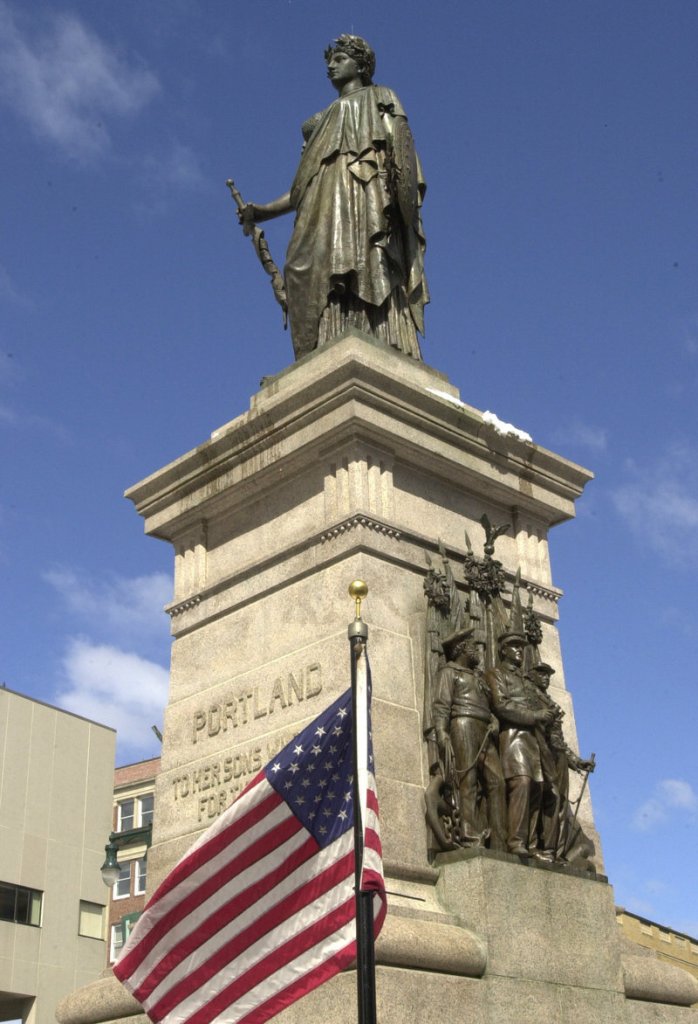At the end of a quiet corridor on the fourth floor of the State House hang the portraits of Maine’s three Civil War governors: Israel Washburn Jr. of Orono, Abner Coburn of Skowhegan and Samuel Cony of Augusta.
Beginning a century and a half ago this month, these three men — a lawyer, a businessman and a lawyer — would lead Maine through four years of unprecedented challenges in a time when the federal government relied heavily upon the states to recruit, equip and train the Union Army.
Between 1861 and 1865 Augusta was a wartime capital with sentry boxes on the portico of the State House, troops encamped in Capitol Park, ammunition being manufactured at the Kennebec Arsenal, and a military hospital near Western Avenue.
These and other war-related sites are to be memorialized this spring by Museum In The Streets historical plaques to be installed by the Maine State Archives in cooperation with the Augusta Historic Preservation Commission.
The start of the Civil War is also being remembered in a proclamation issued by Gov. Paul LePage declaring Tuesday “the beginning of Maine’s observance of the Sesquicentennial of the Civil War.”
That date, April 12, recalls the opening shots fired by Confederate forces on the Union-held Fort Sumter in the harbor at Charleston, S.C.
LePage’s proclamation clearly outlines Maine’s significant contribution to preserving the Union and abolishing slavery.
Maine sent 32 regiments, seven artillery batteries, two cavalry regiments, and one heavy artillery unit to the war. Maine men serving in the war numbered 70,107, the highest percentage of volunteers of any state in the Union. Mainers who lost their lives in the war totaled 9,398.
The Civil War forever changed the course of Maine’s development.
In the four decades from statehood in 1820 to the eve of the war in 1860, the state more than doubled in population, from 298,335 to 628,279.
A significant portion of this growth was rural, resulting in the establishment of many new towns with an agricultural base. Especially dramatic was the opening of southern Aroostook County to farming in the 1840s and ’50s.
However, during the decade of the 1860s, Maine’s population actually registered a slight decrease, due in part to those killed in the conflict and returning veterans who moved elsewhere. Abandoned farms reflected the war’s impact on the state as the nation’s economic focus began to shift westward.
While 150 years is a brief span in historical time, it is much longer in human experience. Yet we are closer to the Civil War than we realize.
Older Mainers who grew up prior to World War II can remember the last Civil War veterans marching or riding in Memorial Day parades.
For those of us in the next generation, the Civil War is made real through connections that are often far less than six degrees of historical separation.
As a result of my friendship with Francis M. O’Brien of Portland and Mildred G. Burrage of Wiscasset, I knew two individuals who had met Gen. Joshua L. Chamberlain, the hero of Little Round Top at the Battle of Gettysburg, and could describe their memories of him. Likewise, Mildred’s father, Maj. Henry S. Burrage, Maine’s first state historian, had seen Abraham Lincoln on three occasions and wrote a detailed account of these experiences for his daughter, which she shared with me.
Our country was preserved and strengthened by the sacrifices that Maine men and women of the 1860s made on the battlefield and the home front.
Even before the Civil War had ended, communities began to honor their patriotism by erecting monuments in public locations and cemeteries across the state. The heroic statue in Portland’s Monument Square honors the approximately 5,000 men, one-fifth of the city’s population, who participated in the war.
No less eloquent is the simple marble shaft in an Aroostook County cemetery that recalls the 113 men who served from Sherman, population 708, in the 1860s.
As LePage’s proclamation points out, from Kittery to Ashland and from Bethel to Eastport, 175 Civil War monuments remind us of Maine’s role in this defining moment in our nation’s history.
This Memorial Day we should consider taking time to visit one of those silent sentinels and reflect on the individuals and events of 150 years ago that helped shape the America we live in today.
Earle G. Shettleworth Jr. is Maine’s state historian.
Send questions/comments to the editors.




Success. Please wait for the page to reload. If the page does not reload within 5 seconds, please refresh the page.
Enter your email and password to access comments.
Hi, to comment on stories you must . This profile is in addition to your subscription and website login.
Already have a commenting profile? .
Invalid username/password.
Please check your email to confirm and complete your registration.
Only subscribers are eligible to post comments. Please subscribe or login first for digital access. Here’s why.
Use the form below to reset your password. When you've submitted your account email, we will send an email with a reset code.